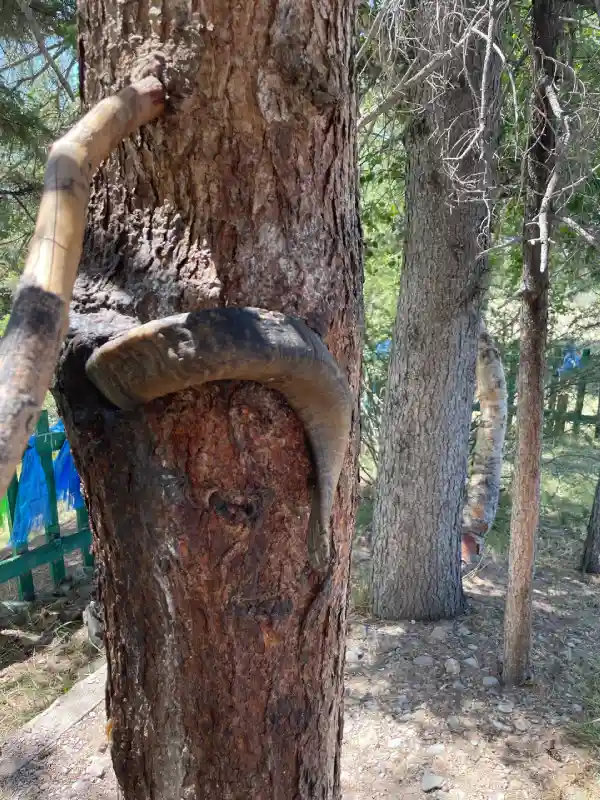Zavkhan is a beautiful land It is called a place where people stop on the road Bayantes bullet is located in the northernmost part of the territory of this province, and borders with the territory of the Russian Federation-Tuva. Behind the center of bullet, the “Tesin River” flows, which originates from the Bulnai Mountains and flows to Russia and flows back into Uvs Lake. There is a continuous thicket of cedar and evergreen fir trees along the banks of the Tes River, which is more than 550 kilometers long. In this thicket of evergreen firs, there is an antler growing from a tree that has been deliberately dug into a hole. This horned tree is called “horned tree” by local people.
Many travelers and vacationers have stayed at the place, whose name has become a local attraction. When you reach A tree with horns, which is about 2 kilometers north of the center of Bayantes bullet, it is full of live animals and its color has not lost its color. If you travel to the center of Sumatra, you must visit it. Next to the tree, 3 other types of trees grew very close as if they were one, adding color to the exhibit.
It is said that in the 1970s, when Tseveg monk discovered the horned tree, it is still worshiped by local people. The most interesting thing is that the horn continues to grow with the tree.


test